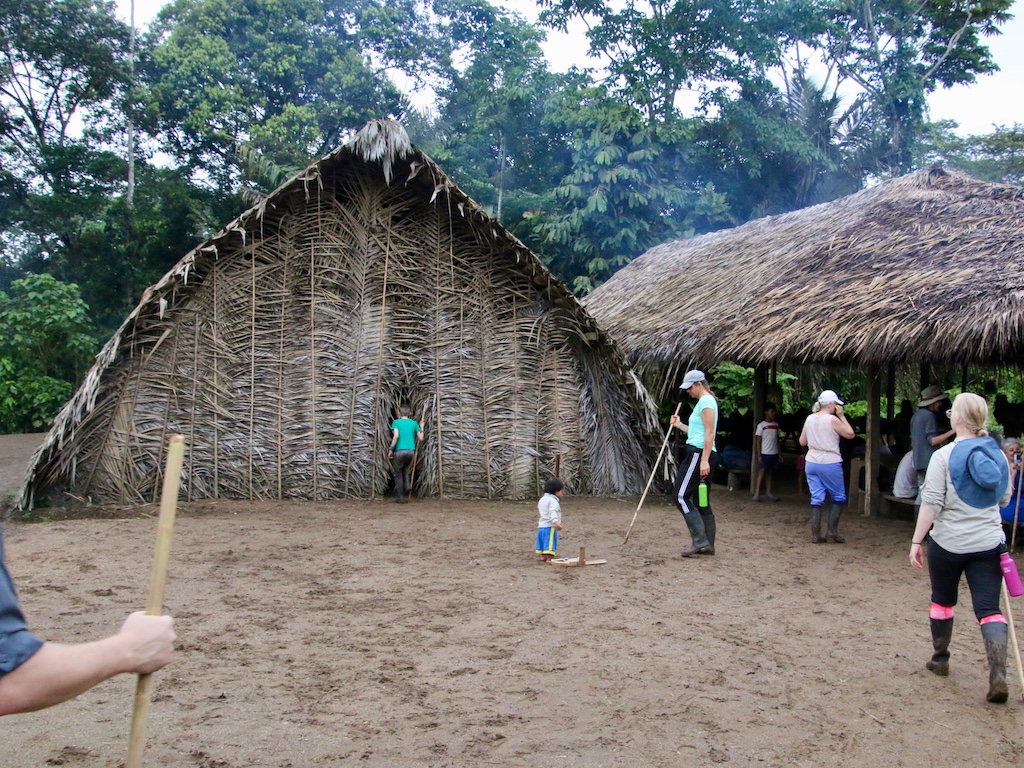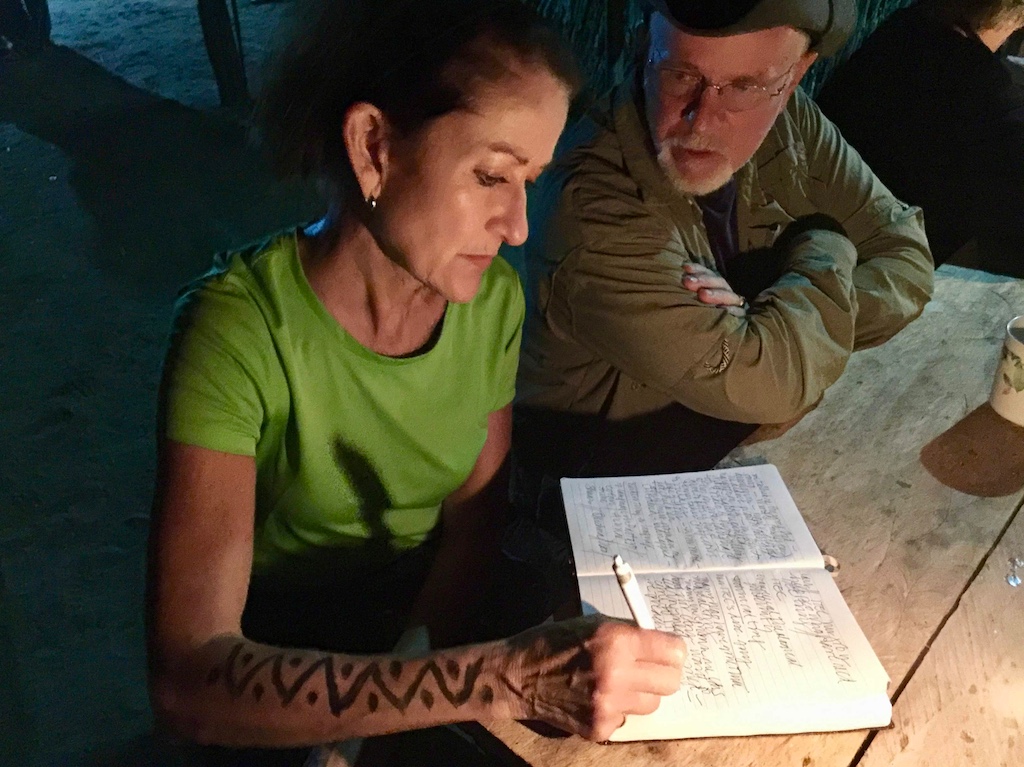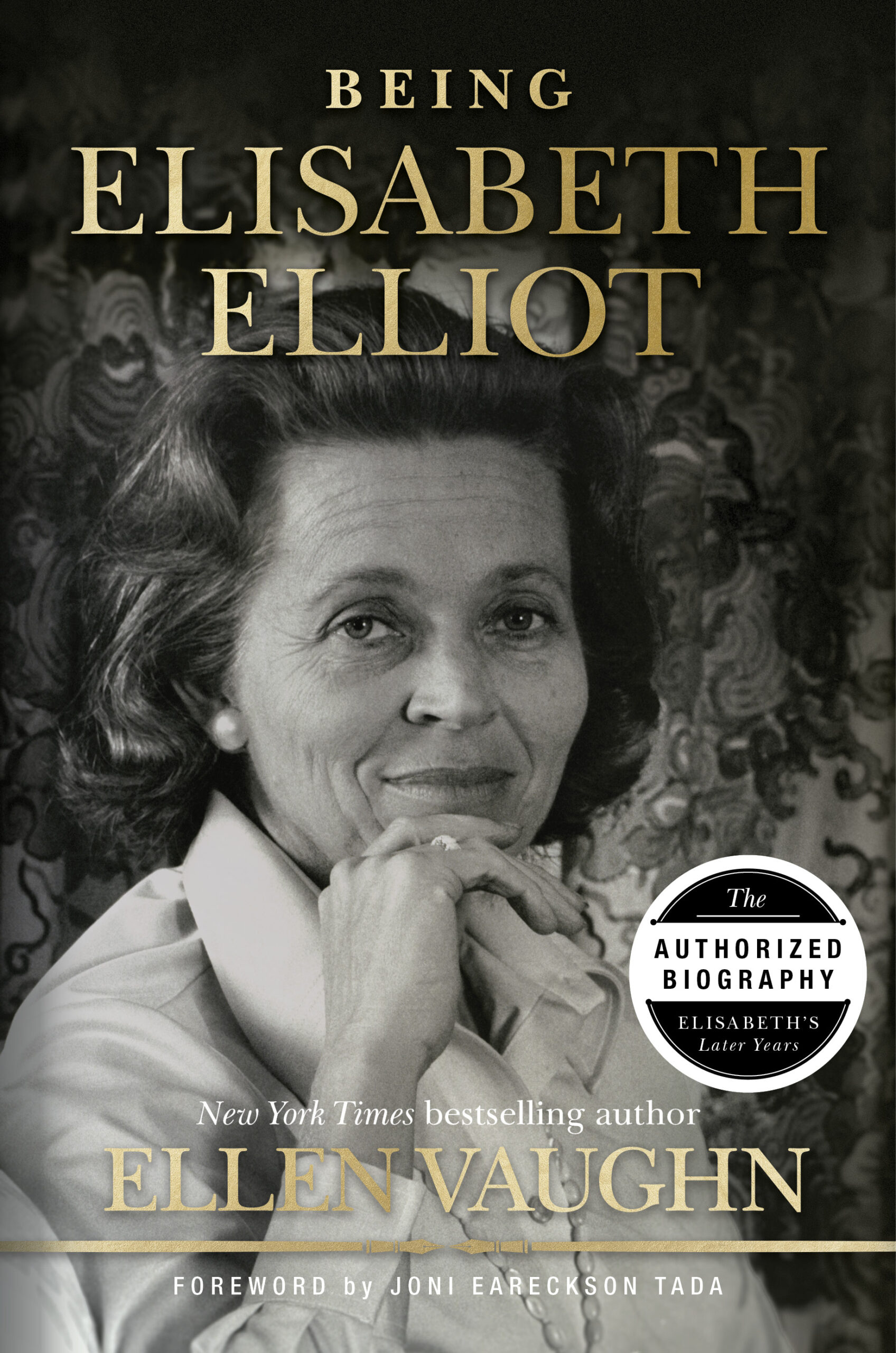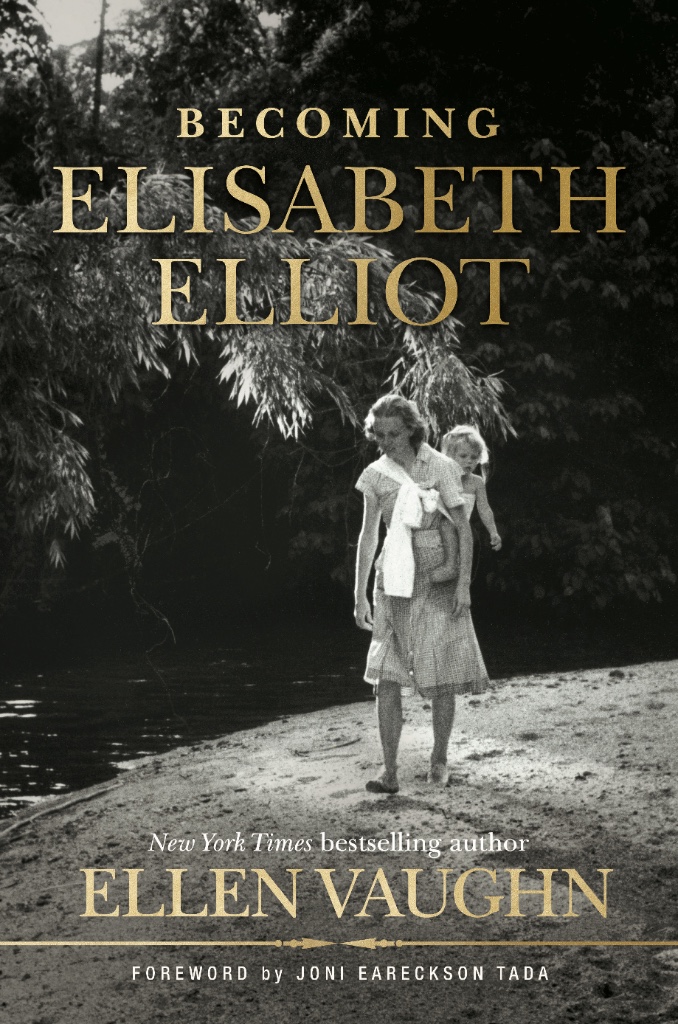Being Elisabeth Elliot
Elisabeth Elliot was a young missionary in Ecuador when members of a remote Amazonian indigenous people group killed her husband Jim and his four colleagues. And yet, she stayed in the jungle with her young daughter to minister to the very people who had thrown the spears, demonstrating the power of Christ’s forgiveness.
This courageous, no-nonsense Christian went on to write dozens of books, host a long-running radio show, and speak at conferences all over the world. She was a pillar of coherent, committed faith—a beloved and sometimes controversial icon. And while things in the limelight might have looked golden, her suffering continued refining her in many different and unexpected ways.
Her early years, related in Becoming Elisabeth Elliot, traced the transition of a young woman who dealt in “certainties” to the woman who lived with the unknown.
Now, being Elisabeth Elliot increasingly meant confronting how much she did not understand. She sought her reference point beyond her own experiences, always pondering what she called the “impenetrable mystery” of the interplay between God’s will and human choices.
And it is that strange mystery which shaped the rest of her startling life story.
“This story-driven book is based on Elisabeth’s private, unpublished journals and candid interviews with Elisabeth’s friends and family.”
Featuring a special foreword by Joni Eareckson Tada
“Ellen takes us beyond Elisabeth the young idealist and opens our eyes to the warm-hearted disciple of Jesus who was honest enough to acknowledge how much she did not understand…”
“Discover the adventures and misadventures God used to shape one of the most influential women in modern church history.”
Becoming Elisabeth Elliot
Elisabeth Elliot was a young missionary in Ecuador when members of a violent Amazonian tribe savagely speared her husband Jim and his four colleagues. Incredibly, prayerfully, Elisabeth took her toddler daughter, snakebite kit, Bible, and journal . . . and lived in the jungle with the Stone-Age people who killed her husband. Compelled by her friendship and forgiveness, many came to faith in Jesus.
This courageous, no-nonsense Christian went on to write dozens of books, host a long-running radio show, and speak at conferences all over the world. She was a pillar of coherent, committed faith; a beloved and sometimes controversial icon. In this authorized biography, Becoming Elisabeth Elliot, bestselling author Ellen Vaughn uses Elisabeth’s private, unpublished journals, and candid interviews with her family and friends, to paint the adventures and misadventures God used to shape one of the most influential women in modern church history. It’s the story of a hilarious, sensual, brilliant, witty, self-deprecating, sensitive, radical, and surprisingly relatable person utterly submitted to doing God’s will, no matter how high the cost. For Elisabeth, the central question was not, “How does this make me feel?” but, simply, “is this true?” If so, then the next question was, “what do I need to do about it to obey God?”
“My life is on Thy Altar, Lord—for Thee to consume. Set the fire, Father! Bind me with cords of love to the Altar. Hold me there. Let me remember the Cross.”
–Elisabeth Elliot, age 21
Also featuring a foreword by Joni Eareckson Tada
“On the following pages, you will come to know the most remarkable Christian woman of the last century—what shaped her convictions, forged her faith, and honed an unyielding passion to win souls for Christ. To those who knew her well, she was Betty. To the world, she was Elisabeth, a captain and not a private in the army of God; a soldier among a gallery of heroes, all of them content to leave home and country in order to waste their lives in jungles and caves for the sake of gaining souls for the heavenly kingdom.
As you read Ellen Vaughn’s story of Elisabeth’s early years, I hope you’ll breathe in a fresh sense of God’s grace and utter reality in a weak and distracted world. I hope you’ll be convinced that the same grace which sustained a young Betty Elliot to become a captain in God’s army will in fact whisper to your soul, ‘Be like her.’”
Publisher's Weekly
“Even those well-acquainted with Elliot’s works will find fresh perspective and revealing insights.”
B&H Publishing
Publisher’s book page on Becoming Elizabeth Elliot. Preorder, Press kit, Author Q+A, and more.




Q&A with Ellen ~ On Writing the book

Why did you write this book? Who did you write it for?
I’m a curious person. I always want to know other people’s stories. I knew about EE, but I didn’t know her. I wanted to explore the woman beyond the platform speaker and missionary icon. I wrote it for those who chafe at religion as usual, people who are hungry for dramatic stories of authentic, relatable, gutsy heroes who do what God is calling them to do, no matter what. She’s not who you thought she was.
Talk about the research you conducted in order to write this book. What was that journey of discovery like?
The research process for this book was arduous and fascinating. First, I relied on EE’s own first-hand accounts of her life. The wonderful Valerie Elliot Shepard, Elisabeth’s daughter, loaned me her mom’s journals. I piled them, in order, on a big table in my office. There was her baby book from 1926, with vintage black-and-white photographs and Elisabeth’s mother’s careful notations about her little blond baby’s development. There was a stubby hardback diary from 1938, filled with penciled entries from the year Elisabeth was 11. On the front it declared, in all caps: THIS DIARY IS ABSOLUTELY PRIVATE TO ALL BOYS. WOMEN, GIRLS AND MEN CAN READ IT. There were leather-bound volumes from high school, college, EE’s early missionary life, her marriage to Jim Elliot, the birth of their daughter, the earnest outpouring of excitement about Jim’s plan to reach the Waodani with his friends . . . and then the discovery that he had been savagely speared to death. The journals roll on, recounting the unspooling of a life for decades and decades and decades. I felt like an archeologist, or a time traveler, reading, in real time, Elisabeth’s most private thoughts. She didn’t know what was coming next in her story—but I did. Through the pages of those beautifully-written journals, I carried her life around in my head all the time. It was surreal.
The second research reservoir was my interviews with EE’s family and close friends. I was immeasurably enriched forever by getting to know these new friends. They were wise, funny, honest, and helped me know EE through their varied experiences with her over the years.
Third, my research took me from my home near Washington, D.C. to the great eastern jungle of Ecuador’s Amazon rainforest. I was able to live among a Waodani clan for a few days. To get to them, I flew into Quito, took a bus to Shell, and then was blessed to buzz in a tiny plane over the thick, green jungle. From the air it looked like a vast sea of broccoli. Brown tributaries of the Amazon snaked through the green expanse. We landed on a soggy grass landing strip on a Band-Aid-sized clearing in the jungle. Mud flew in great gobs over the windshield as we rocked and sputtered to a stop. Wonderful Waodani hosts welcomed us, then took us on a trek through the jungle for several hours, then onto long, slender canoes, and then we arrived at the Waodani settlement. Grass huts, hammocks for sleeping, the most beautiful outhouse in the Amazon, no electricity, no connectivity, no devices: it was wonderful. Hunters would go out each day. One day they came back with a wild boar. The next day they got a Rodent of Unusual Size. The next day it was a big, furry, odiferous monkey. I became a vegetarian for the week.
I can’t tell you how extraordinary it was to sit by the fire at night with Mincaye. He was young when he and other Waodani warriors killed Jim Elliot, Nate Saint, Ed McCully, Pete Fleming, and Roger Youderian. He knew nothing about Jesus on that bloody day in 1956. By the time I met him, Mincaye was in his early nineties. He came to know and love Jesus many years ago. He was one of the leaders among the Waodani believers. He made me a spear. Watching him carefully hone the knife-sharp tip of that eight-foot weapon, I thought of the day he and his fellow tribesmen sharpened their spears to kill the missionaries . . . and now, here he was, a brother in Christ. Mincaye died just a few months ago. So now he’s in Heaven with Jim and Elisabeth Elliot, and so many others we all love!
What makes this book different from the many others that have been written on the Elliots?
How has Elisabeth Elliot’s story affected your faith? How do you think her story can affect others today?
You know, Michelangelo said that every block of stone has a statue within; the task of the sculptor is to discover it.
As her biographer, my stone was the body of Betty’s writings and the testimonies of those who knew her. An immense monolith. I wasn’t chipping with a chisel. I was shaving away millions of words. As I did so, the shape of the woman began to emerge.
To change the image, I’d gaze at the tiny, faded handwriting filling the thin pages of Betty’s old journals, steeping in her thoughts as if I was water and she was a teabag. As I absorbed her essence, I found I wasn’t just carrying around my own life, which was heavy enough at the time. In the strangest way, I was carrying around Elisabeth Elliot’s life, every day. I was not a biographer, but a steward, with a mundane but sacred task. Write the story.
Turning the thin pages of her journals, I knew the end of that story. The young Elisabeth, writing, did not. I wanted to warn her, to shout across the decades to prepare for the storm. Get ready! The hurricane is coming!
It’s a mercy that none of us knows what is coming.
This was reinforced by my own experiences as I wrote this book. My own husband’s rare brain cancer had been quiet for years. Then, even as I worked away, peering with a magnifying glass, as if I was an archeologist, at Betty’s closely-written journals, Lee developed new, small tumors. He had Gamma Knife surgery. Several times. Months later, he began acting strangely. Pressure in his brain. Necrosis, from the proton radiation that had saved his life years earlier. Then a raging infection surged, promising to kill him. Massive emergency brain surgery, guarded condition. He almost died three times.
So I found myself reading Betty Elliot’s journals and jotting notes about her life while in operating room waiting areas, intensive care units, rehab facilities, and by any number of hospital beds. I carried Betty’s loss of Jim even as my own loss of Lee was not only theoretical, but seemingly imminent. Yet it was good.
By this I mean that the truths that carried Betty Elliot through her particular storms carried me through mine. I belong to God. He is faithful. His words are true. And transformation—the ultimate Springtime—already planted, is coming.
So, in spite of our very different personalities, habits, or preferences, this sister’s story absolutely strengthened my own. And that is my hope for any reader, whatever his or her situation may be.
What do you want the reader to take away from this book?
This book focuses on the early years of Elisabeth’s life. Why split the biography into two volumes?
Her life demanded it.
Some people assume that EE was born middle-aged and twice widowed, because her public life emerged in that season of her life. But how did she become that person? Becoming Elisabeth Elliot tells the twisted tale of the events God used to shape an idealistic, rule-following young woman who was pretty performance-driven into a person who pursued Christ, not other people’s approval. We’re all in the process of becoming, all through life’s journey; this book about the young EE stands alone and tells about her beginnings. The next volume tells the rest of the story!
What parts of Elisabeth’s story did you find yourself relating to the most?
EE helped me simplify. I am going to trust God and throw myself on Him like when I had a day off in Ecuador and flew Superman style across a high mountain gorge on a zip line, a waterfall spilling tons of water below. And I am going to do the next right thing. God’s grace and love and presence give us enough sustenance and guidance needed, one step at a time, one day at a time. And somehow, in those two things, I have had absolute, supernatural peace.
Oh, also, I think many of us can relate to EE’s upbringing. Many of us who grew up in Christian homes had to make the transition between an unquestioning sort of rule- oriented acceptance of our parents’ faith to our own intimate connection with Jesus. Some leave faith altogether. Betty Elliot had to see and reject legalism, glossy religiosity, platitudes, and “triumphal, victorious” missionary stories in favor of an authentic faith that was about Jesus, not churchianity.
Elisabeth Elliot wrote multiple biographies herself. Did you find this to be a benefit or added challenge to your work?
The process of writing a biography, of course, is much more than being granted permission to do so from your subject’s family, particularly with a story like Elisabeth Elliot’s that is well known by some and completely unknown to others. Some will disagree with what I omit about EE; others will not be happy with what I include. The earnest biographer is doomed.
But in this, I take my marching orders from Elisabeth. Regarding her biography of a missionary named Kenneth Strachan, she said,
“And so I began—trying to discover, not to construct, the truth about this man. The careless—apparently, at times, haphazard—shape of the life unfolded itself before my eyes through his own writings and the testimony of those who knew him….Again and again I found myself tempted to ask what my readers would want this man to be, or what I wanted him to be, or what he himself thought he was—and I had to ignore all such questions in favor of the one relevant consideration: Is this true? Is this how it really was? And of course this is the question that any writer, of any kind of literature, has to be asking all the time.”
Elisabeth concluded,
“I have tried to lay bare the facts of the case, answering the question, Is this what he was? with as much truthfulness, sympathy, and clarity, as I possess.”
So, for me, as I tried to “lay bare the facts of the case,” I relied on EE’s journals, letters, books, friends, family, acquaintances, those who liked her, those who didn’t, to fill out a biographical picture of Elisabeth Elliot. A biography, particularly a narrative biography like this one, isn’t a series of photographs, which capture moments in time. It is more like a portrait, which captures enduring, recognizable truth about a human being. I sought the truth about a fellow pilgrim on life’s journey, one who has gone before us, and tried to paint a verbal portrait of Elisabeth Elliot in both her glories and her humanity. It’s not a hagiography, an “expose,” or an analysis of her theological or social views. It’s a story: one I tried to tell with as much truthfulness, sympathy, clarity—and charity—as I possess.



